Last week, I reviewed the Prius C – and for the first time, found myself praising a hybrid car’s design and economics. Or at least, not condemning them.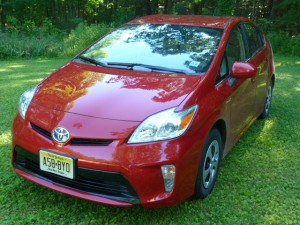
The C is reasonably light (about 2,500 lbs.) great on gas – and most relevant of all, price-competitive with non-hybrid economy-minded cars. I’d have liked to see Toyota make it even lighter – which would have made it even easier on gas. And available without price-padding power equipment – which would make it even more price-competitive with non-hybrid economy-minded cars.
But still, a change for the smarter – as I see it.
This week, they sent me the regular Prius. And while it’s certainly praiseworthy in several respects (more on this below) I’m still a bit ambivalent about its economics – both short term and long-haul.
I’ll get into that now.
The Prius, like Elvis, needs no introduction. Love it or hate it, it’s the rock star of hybrids – the first one to be mass-produced – and the only one to be sold in massive numbers. More than 1 million have been sold since 2000.
It is mid-sized, size-wise – so, slightly larger overall than the Prius C – with a hatchback rear and “tall roof” profile to maximize interior space – also like the Prius C.
It starts at $24,000 for the base “Two” trim and tops out at $29,805 for a “Five” with all the bells and whistles.
A plug-in version of the Prius is also available. It has an MSRP of $32,000.
One important point of order about the Prius: Unlike competitor model hybrids – such as the Ford Fusion hybrid, the Hyundai Sonata hybrid, the Honda Civic hybrid and the soon-to-be-here (2013) Honda Accord hybrid – the Prius is not a hybridized version of a conventional car. It is what’s called in the car business a “dedicated platform” – meaning, it was designed from the wheels up as a hybrid. This gives it a leg up over conversion hybrids like the Fusion, Sonata and the others – which are inherently compromised as a result of their dual-role design.
The Prius, for example, delivers by far the best fuel economy of any current hybrid that’s not another Prius: 51 city, 48 highway. The much more expensive Ford Fusion hybrid ($28,775 to start) only manages 41 city and 36 highway. The comparably priced ($24,200) Civic hybrid only gives you 44 city and 44 highway.
Toyota is offering a dealer-installed PLUS Performance handling enhancement package for buyers who want a sportier-driving Prius. It includes low aspect ratio sport tires on lightweight alloy wheels with a custom offset, lowered suspension, “tuned” rear sway bar and an exterior body kit for enhanced aerodynamics
There is also Toyota’s Entune smartphone/PDA integration technology. Power front seats are available, too.
WHAT’S GOOD
Seamless operation; more-than-adequate power/acceleration for everyday driving.
Roomy, comfortable interior with lots of cargo capacity relative to standard-shaped mid-sized hybrid sedans like the Ford Fusion hybrid or Hyundai Sonata.
Lives up to the billing, MPG-wise.
Costs a good chunk of change more than a basic, non-hybrid economy-minded sedan – which may negate some of the MPG advantages.
Numb driving feel.
Electrically-powered AC sometimes struggles to keep car cool.
Down the road upkeep/repair costs could be much higher than what you’d have to spend to keep a regular car on the road.
UNDER THE HOOD
The Prius has three sources of power:
Primary propulsion is provided by a 1.8 liter Atkinson Cycle gas engine, a type of gas engine optimized to be extremely fuel efficient. Supplemental propulsion is provided by an electric motor, which boost the total power (134 hp, combined) of the Hybrid Synergy system. The gas engine also acts as a generator, feeding back electricity to the storage battery – which powers accessories such as the air conditioner and the car’s water pump. One of the neat things about the Prius is that the gas engine does not have any engine-driven accessories – and so, no drive belts to wear out or change out.
Ever.
Up to about 25 MPH, the Prius can propel itself on electric power alone, with the gas side of the powertrain turned off – reducing your gas consumption to zero. And of course, the gas engine will automatically shut down when the car is stopped, too – as when waiting at a red light. You don’t have to worry about the batteries running out of juice, either. The system automatically monitors the state of charge and if it gets too low, the gas engine will automatically cut in to provide the necessary top-off.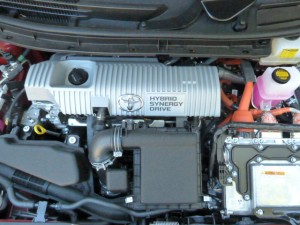
The regular Prius is “closed loop” – meaning, the batteries get recharged by the system as you drive. If you buy the plug-in option, you can recharge the batteries from an external source, such as a household 110 volt outlet. This means you don’t have to run the gas engine (and burn gas) to bring the Prius up to full charge. For people who use their Prius mostly for short-distance, stop-and-go-type driving – conditions that let you run the car on batteries most of the time – the plug-in option holds out the possibility of almost-entirely electric operation – theoretically cutting gasoline costs to the bone.
Of course, electricity isn’t free – and the plug-in Prius is considerably more expensive than the standard model – so be sure you run your numbers before you decide which version makes the most sense.
Even without the plug-in option, the Prius is parsimonious: 51 MPG city-type driving and 48 on the highway. Like Elliot Ness, this is untouchable. Nothing – other than another Prius – even comes close.
Performance is ok, too. In Power mode, you can get to 60 in about 10 seconds flat – in the same range as non-hybrid economy cars and adequate for dealing with the ebb and flow of modern traffic.
The other two drive modes – ECO and EV – are self-explanatory. ECO is for maximum economy and EV means you run as an electric vehicle, up to about 25 MPH and for as long as there is sufficient juice stored in the batteries.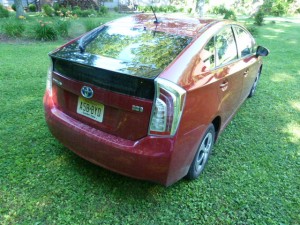
ON THE ROAD
As a conveyance, it’s hard to fault the Prius. It runs and drives smoothly, seamlessly. It’s almost impossible to notice the transitions between gas engine, electric drive and some combination of the two unless you are watching the LCD display monitor that tells you what’s doing what. The high-torque mini-starter gets the gas engine going instantaneously and imperceptibly. If you’ve never driven a Prius, don’t worry. It’s not like starting a standard car. You literally won’t notice – hear or feel – a thing. You push the Start button, the gauges light up and the system tells you “ready” – and off you go. After that, the car’s computer handles everything, as far as starting and stopping the gas engine – and engaging or disengaging the electric drive.
I’m not the world’s number one fan of the toggle switch gear selector that’s mounted on the “floating” center stack – but it’s easy to use and, unlike some of the drive-by-wire gear selectors out there, this one engages whatever range you select as immediately as a mechanical shift linkage. There is no delay while the system “thinks.” The only downside – and this is entirely subjective – is the absolute lack of feel. It is literally like operating a video game toggle.
Some mock the acceleration abilities of the Prius, but it’s no slower – or not noticeably slower – than many non-hybrid cars. Other hybrids – like the Ford Fusion hybrid – are only marginally quicker. The Ford gets to 60, maxxed out, in about 9 seconds flat. Is that a BFD? A one second difference?
Trust me, you’ll need a stop watch to tell the difference.
Besides, most of the time, most people aren’t accelerating as fast as they can – or as fast as their cars can go. I’ve driven the Prius extensively and can vouch that it’s got enough beans to keep up with traffic – and pass traffic, when necessary. The car’s top speed is well over 100 MPH, by the way – certainly adequate for driving in a country where the maximum legal speed everywhere except a few desolate stretches of Texas is 75 MPH.
Handling isn’t what you’d call “sporty” – well, I would not call it sporty. But it is predictable and the ride is neither over-soft or too firm. My only complaint – and again, this is subjective – is the numb feel of the thing, especially the steering (which is electrically driven).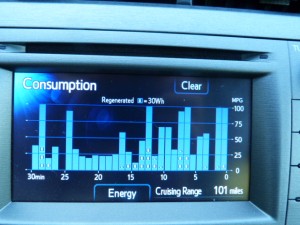
If you push the Prius, the weight (3,042 lbs. empty) will start to slosh around – and the traction/stability control will step in pretty aggressively. But Prius drivers don’t drive that way, so they’ll probably never notice.
I haven’t yet tested out the PLUS Performance handling upgrades – but I’ve seen the pictures and the car looks pretty tough… for a Prius. It sits noticeably lower (about 1.1 inches closer to the tarmac) than the stocker and the wide offset wheel/tire package (215/45R-17s) gives it a sporty squat – a look accentuated by the ground effects body kit.
Just one objective nit: The combination of an expansive canopy – the Prius has a lot of glass surface area – and electrically-driven AC plus a really hot day can result in a not-quite-cool cabin. During the week I had the Prius, we had a heat wave, with temperatures well into the 90s and very humid. While it didn’t get uncomfortably hot in the Prius, it was noticeably less cool than in a standard car with an engine-driven (and probably higher-capacity) air conditioner. This one won’t frost the vents like an old GM Harrison system running R-12.
But then, what will?
Buying the optional solar sunroof is probably a good idea if you live in Arizona or Florida. It vents the car’s interior, which will probably help the AC system keep the car livable on brutal days.
This is the third generation Prius – but the shape is still iconic and unmistakably “Prius.” This is part of the car’s appeal. It is a rolling testimony or billboard – the tip of the proverbial spear, touting to the world that hybrid cars are here. And that you are driving one. Certainly, people also buy the Prius for the obvious gas-saving reasons. But the fact that it’s an obvious hybrid is also a major sales driver.
Also the fact that it’s much roomier than a conventionally shaped mid-sized hybrid sedan as a result of its tall roof/hatchback layout. Let’s take a quick look at the Prius inside vs. the Ford Fusion hybrid.
The Prius has nearly 22 cubic feet of trunk space – that’s with the second row up – vs. 11.8 cubic feet for the Ford. With the second row down, Prius opens up to almost 40 cubic feet of cargo capacity – more than three times as much usable cargo-carrying space as the Ford. This gives the Prius everyday versatility – in addition to excellent efficiency – that’s just not available in standard-layout hybrids like the Fusion.
The Ford does have about the same front and rear seat head and legroom – but the Prius has the extra utility, as well as the additional efficiency.
And a much lower MSRP, too.
Another competitor – the Hyundai Sonata hybrid – is more cost-competitive ($25,850 to start) but has even less cargo-carrying capacity (10.7 cubic feet, max – about four times less than Prius). The Hyundai’s main card is its impressive front seat legroom – which at 45.5 inches is three full inches more than the Prius at 42.5 inches. But, there’s a catch. The Hyundai provides that front-seat legroom at the expense of backseat legroom – just 34.6 inches vs. 36 inches in the Prius. The Hyundai hybrid’s gas mileage is also not even in the same ballpark as the Prius, at 35 city, 40 highway.
As a dedicated rather than conversion hybrid, the Prius has its own entirely unique dash layout and instrumentation – including multiple (and programmable) efficiency readouts you can toggle through using a steering wheel mounted button to track consumption as well as help you adjust your driving to maximize efficiency. These displays (and controls) are futuristic – but not fussy. In fact, they’re pretty straightforward and self-explanatory. The chief flaw is they can be too interesting – and tempt you to take your eyes off the road.
Other stuff: There is a vent built into the passenger side seatback. This is for the hybrid battery – and you may notice a slight whirring sound at first. But you quickly acclimate and the occasional fan noise fades into the background.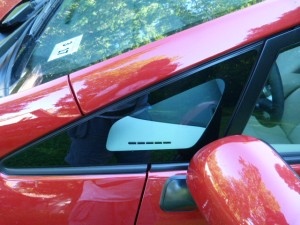
I wish Toyota would make the fixed front quarter glass moveable, like old-style wing vents. This would let you ventilate the car without having to turn on the AC. On the highway especially, this could probably boost the already excellent gas mileage even more.
I also wish Toyota would nix the super-annoying (and distracting) back-up buzzer that goes off when you put the Prius in reverse. The Prius C does’t have this stupid buzzer – and it’d be great if the regular Prius didn’t, either.
THE REST
I averaged just over 45 MPG during the week I test-drove the Prius – which I consider outstanding given how I drive. Which is not the way the typical Prius prospect probably drives. In fact, no matter how you beat on the thing, it’s very hard to get less than low 40s – average. Which means, about 10 MPG better overall – at the least – than a non-hybrid economy car and probably 12-15 or so better than a non-hybrid mid-sized car.
But, I’m still not sold on the overall economics. The least expensive version of this car costs $24,000 – assuming you can buy it at “sticker,” which according to what I gather is no easy feat. But for the sake of discussion, let’s assume $24,000.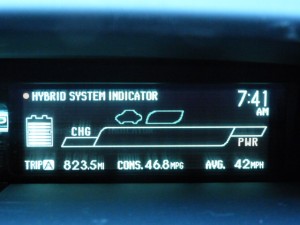
This is about $2,000 more than an about-the-same-size, non-hybrid Camry sedan ($22,055). It’s true that in city-type low-speed driving, the Prius holds a huge fuel-efficiency advantage – 26 MPG better (51 MPG vs. 25 for the Camry). But the highway difference is smaller – 13 MPG better (48 MPG for the Prius vs. 35 for the Camry). Overall – average, real-world economy-wise – the difference seems to be about 10-12 MPG. Or at least, that was my experience.
How long will it take to “work off” the higher up-front cost of the Prius? At the time of this review in late June, gas was selling for just under $3 a gallon in my area. Assuming that holds, the $2k difference amounts to about 667 gallons of “free” gas – enough for several years of “free” driving before the Prius catches up.
Of course, gas prices could just as easily – and perhaps more probably – shoot back up to $4 a gallon – in which case, the Prius catches up much sooner and after that, it’s gravy.
That said, I’m still much more persuaded by the slightly smaller – but more efficient and much less expensive Prius C. If the main object of the exercise is saving money – not just gas.
I’d like to see the Prius shed at least 300 pounds (the Prius C is more than 500 pounds lighter than the regular Prius) and be offered in a “de-contented” trim without some of the weight-adding, cost-padding and power sapping accessories.
And with things like manual wing vent windows.
THE BOTTOM LINE
The regular Prius is a very impressive car. I’m just not sold on it as an economical car. If your chief desire is to save as much money as possible, take a look at the Prius C. It’s nearly the same size inside, gets better mileage – and starts out $5,000 less. The regular Prius is plusher – and offers more “stuff.”
But then, the object is no longer maximizing economy, is it?
Throw it in the Woods?




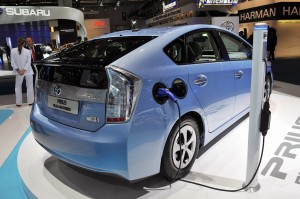
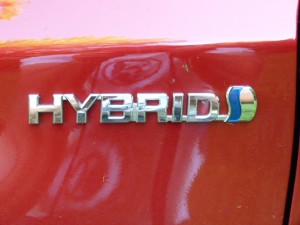
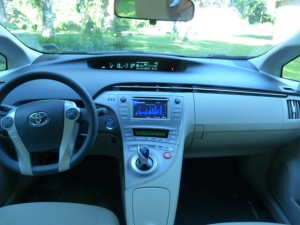
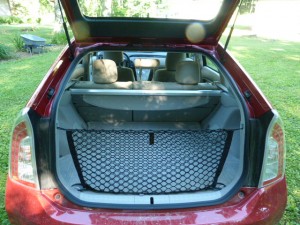







Hi Eric, I’ve been driving the latest generation Prius for a bit over two years now, some 37,000 miles. Your review was pretty much spot-on. By driving mostly non-interstate primary and secondary highways, with a good bit of in/around city, I have averaged about 56 summer and 51 winter. (As you certainly know, winter gas has less energy per unit volume, which partially explains the difference, that, plus the need to provide extra heat for the cabin, reach programmed operating temps, etc. etc.) But those are some fantastic number, imo. Of course, it’s usually just me in the car, which keeps weight down a lot. I do notice on tanks where I’m carrying passengers a lot, that the added weight affects fuel mileage a bit.
See, that’s the thing about the Prius – it’s kind of like driving a video game as I see it. It’s possible to use the display to really zero in on the mileage you’re getting in real time. I think it’s fair to say this car has “taught me” how to drive for mileage, which is a game all in itself. For example, I see the red light up ahead (noting the grade is slightly uphill) and, rather than race up to it and brake at the end like the Honda Accord on my left, I coast up in the right lane – and save a lot of energy, which shows up instantly in the on-board computer. The Prius actually educates the driver about the relationship between the inputs they make to the machine, and the actual, real time results to their fuel economy. Pretty cool, and a neat “game” in itself, so long as you don’t pizz off the other drivers too much. It helps to be “considerate” and practice this “game” where you don’t affect traffic too much, like on 419, in the right lane. Of course, the uneducated Accord driver doesn’t get it, and probably thinks “oh, there goes a Clover in his Prius.”
That’s OK. See, I’ve got a Dodge Viper too! And I don’t worry one whit about the 4-6 MPG I seem to get running the full course at VIR with it! 🙂 So, anyway, should I inadvertantly hold YOU up down here sometime, bear in mind I’m probably “hypermiling” – trying to best my best tank (61 MPG), and that I’m usually all about getting out of the way of muscle cars and crotch rockets!
Anyway, the Prius is a marvel of technology for sure, and if the gas goes back up, or settles around 5.00 for a few years, as I think very probable, the cost-benefit I did shows my Prius 1 (lowest trim level) will likely save me nearly 10K in gas over it’s probable life (200K).
One more point to make, since the Prius uses regenerative braking, no engine belts, etc., etc., typical maintenance is reduced a good bit (brake shoes, 10K mile oil changes due to lighter duty cycle, etc.) Hell, brakes will probably go 60-80K miles. I do have a nagging worry about the big battery – but most Prius cognoscenti seem to believe this won’t be a big deal – there will probably be after-market solutions that dodge the dealer service department surcharge by then. Many already have over 100K on the original batteries, so, I don’t worry a lot.
Anyway, really enjoy your site (you get picked up often on Lew Rockwell, which is must reading for us libertarians, and that’s how I discovered your terrific site) so, again, keep up the good work, and I’ll keep reading and try to stay well right in my Prius for those Trans-Ams and sport bikes that happen to be “driving enthusiastically.”
I wouldn’t be caught dead in anything that Ralph Nader or Al Gore would approve of.
I still can’t stand the things.
They still epitomize to me the corporate-State agenda: which includes spinning the ecological debate away from systemic sustainability and towards efficiency. For efficiency is a ratio, and a ratio has two terms: it’s that second term that throws out the whole concept.
We are given the reassurance that there are all kinds of differences, exceptionalities, provisos that mean that this is not the sort of situation where we might expect Jevons’ Paradox to kick in imminently, by those wholly blind to the fact that it’s over half a century of Jevons’ Paradox that got us to this point. More “efficiency” will just make it worse.
Conversely, and as I mentioned before: in a context that is truly sustainable (and, need I add? wholly free) it is unlikely that anyone should need or want paragons of efficiency such as these. For sustainability (as, indeed, liberty) can happen at any level of efficiency – and I submit that it is probably easier if the limits of efficiency are fairly low. Sustainability depends on many systemic factors but, contrary to popular belief, prevalent typical-unit efficiency is not one of them.
One thing I can’t understand is why I have not yet seen a Prius gasser. That’s what a Prius wants, to my mind: not-very-grippy ’60s drag slicks on the back, a straight tube axle sitting too far forwards, no front bumper panel, open zoomies out the front wheel-wells, and a blown Hemi …
I’m with you, Ned.
Maybe I’m just slow-witted, but I prefer to save money as opposed to saving gas.
I reason that I end up with less outlay overall by driving reasonably fuel-efficient older vehicles I buy used and pay for in full at the time of purchase for about one-fourth the cost of a new Prius. I may pay more for gas, but since I have no monthly payment, pay zero interest on a nonexistent loan, minimal insurance (based on the much lower value of the used vehicle and the fact that I can buy a liability-only policy) and a fraction of the tax (in my state, the property tax on a vehicle can be huge… if the car is new) I end up paying out much less overall.
I’ve done the math and my total cost to drive the ’98 truck is running around $60 a month right now. The longer I drive it, the lower my monthly cost.
I cannot imagine a scenario in which a Prius could cost me less to drive than $60/month.
Maybe I’d spend less to fill it up. But how is that helping me, financially, if the car itself costs me several hundred dollars a month to keep?
Now, granted, I am not driving a shiny new car. But that is a separate criteria – and people who use that as the basis for their decision are really interested in “saving money” only secondarily.
Addendum: I can also service my conventional (non-hybrid) myself – another money saver. With a Prius – or any hybrid – you’re probably going to have to leave other-than-basic service to the dealer. So, it’s not just the potential replacement cost of things like the hybrid battery pack as such – it’s also the cost of paying a dealer $70 per hour to service all the various components of the hybrid drivetrain.
You’ve got, in effect, two drivetrains – one gas, one electric/battery. That implies double the maintenance expense.
Other than a $30 water pump, a set of brake pads and filters, I haven’t had to do any major work to my truck. But when something does come up, as it inevitably will, I’ll be able to deal with it myself. I don’t think many (if any) hybrid owners can honestly say the same.
Where can you find $70/hr dealer? Last I checked, most dealers are about $100+/hr in NJ.
Roger that!
My neighbor recently spent $800 for “basic” brake work… madness.
I try to do as much work as I can.
I will need to have the muffler/tail pipe checked. I know there is a disconnect somewhere (I can hear the difference).
I am not sure how difficult it is to change the tailpipe/muffler, but I make an attempt. If it is beyond my ability, I can go to a local muffler shop.
Velly nice, but do you have car that attract the woman with the shave down below?
Time to review the Prius V for comparison.
And the redesigned Camry hybrid…
The Prius styling looks OK to me. And let’s face it….almost “all” econocars are simply transportation appliances.
The only way to know how economic much sense this car makes is with a crystal ball. Before Presidential elections, both interest rates and gas prices have a tendency to go artificially low. It is unlikely that gas prices will remain below $3 for too long. There is a possibility that they could go up to $6, or even $7 per gallon. If that happens, the higher initial investment for this hybrid will seem small indeed. As you also mention, the long term maintenance costs remain uncertain, though slightly ominous.
Nevertheless, at 51 mpg, buying a Prius does not seem too financially foolish.
Those are impressive gas mileage figures for the Prius and the Prius C. And like you said, the Prius C makes some economic sense. But I can’t get past the looks. I look at the car and I want to go to sleep. Just my subjective opinion I know, but can’t they give the car a bit more style and soul?
It’s definitely not an enthusiast’s car – at least, not in the traditional sense. It’s designed for people who don’t really give a damn about cars as cars. It’s a kind of optimized appliance.
They could sex it up, of course. But then it would be appealing to a different buyer. And that buyer probably doesn’t want a hybrid!
Good point about sexin’ up, would be a waste on the crowd they are trying to sell to. And they must be doing something right, over a million sold you said. So someone is buying the things.
It does seems more like an appliance or a basic commodity than a car. Kinda like buying a washing machine, all you want out it is for it to wash the clothes well and economically.
Since the cars have been around since 2000, have you looked into the long-term reliability and maintenance costs?
I’ve been trying to find out about the current performance of hybrids more than ten years old, but so far haven’t been able to come up with anything authoritative. Just anecdotes – “My 2002 Prius has 120,000 miles and still performs great,” etc.
If I had Top Gear resources, I’d buy a Prius and then put it through a long-haul durability test to replicate ten years of driving, including winters and summers – and report the results. I think that’d be very interesting… either way!
Eric,
There are lots of Prius owners on Priuschat.com who are willing to give you all the data you need, from the first version in 2000 to the newest Prius v. They covers all geographical area all over the world. Many of them keep a life time records of every gas fill up, repair, troubles… The most famous one is John’s stuff
http://john1701a.com/
Hi Allen,
Well, that’s fine – but it’s more anecdotal data. I’m talking about controlled tests done according to a specific set of standards under specific conditions. One measure of the Prius’ long-term durability, though, would be to find out how many ten-year-old ones are still in service as daily drivers.
I know lots of high tech guys love Prius’ ergonomics. The egg shaped body gives best aerodynamics (Cd), for example. Yeah, I will love the aptera body if available, but I think Toyota has always target for mass market, which means, compromise and conservative.
(https://www.google.com/search?aq=f&sugexp=chrome,mod%3D8&q=optera&um=1&ie=UTF-8&hl=en&tbm=isch&source=og&sa=N&tab=wi&ei=tVvrT9CiGoejrQH5ldC8BQ&biw=1440&bih=775&sei=t1vrT6z1NJT7rAGqkLzeBQ#um=1&hl=en&tbm=isch&sa=X&ei=9FvrT-iPMIf2rAHPtt3XBQ&ved=0CEYQvwUoAQ&q=aptera+electric+car&spell=1&bav=on.2,or.r_gc.r_pw.r_cp.r_qf.,cf.osb&fp=2a7189dd3effa68f&biw=1440&bih=775)